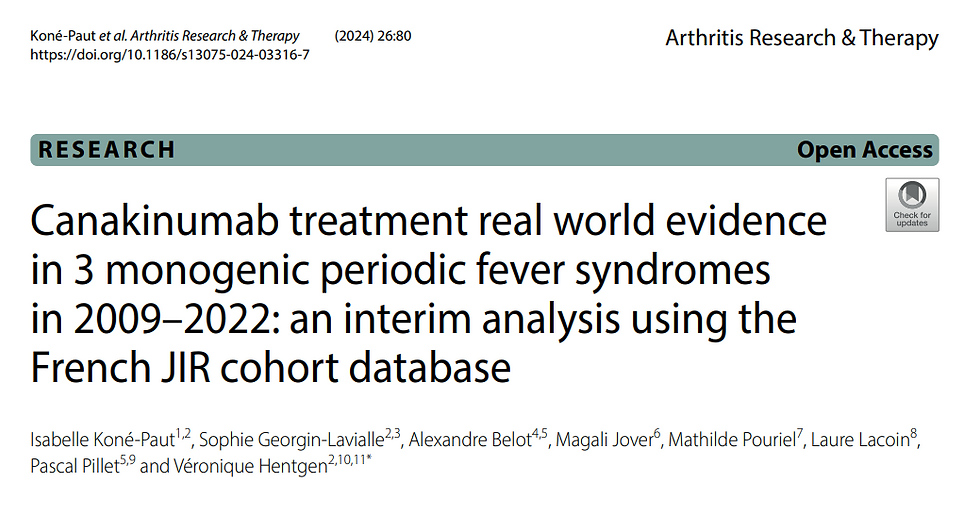
Abstract
Background: With their broad presentations and no global biomarker to discriminate crises and attack-free periods, Systemic Auto-Inflammatory Diseases (SAID) are difficult to manage. This study assessed Serum Amyloid A (SAA), C-reactive protein (CRP) and serum calprotectin as potential biomarkers to monitor patients with SAID.
Method: SAA (already studied in Familial Mediterranean Fever (FMF)), CRP and serum calprotectin were measured on SAID adult patients from Juvenile Inflammatory Rheumatism (JIR) cohort during their follow-up visits between 2020 and 2022. Crises and attack-free periods were clinically determined.
Results: 96 measures, mainly from FMF (43 %) and Unclassified SAID (USAID) (37 %) patients were included. Using ROC curves, a threshold with sensitivity and specificity of/over 75 % was determined for SAA (9 mg/L) and CRP (9 mg/L) but not for serum calprotectin, not investigated further. With this threshold, the results were similar in FMF and USAID patients' subgroups. SAA and CRP showed a positive correlation with crises and attack-free periods in SAID patients (r = 0.4796, p < 0.001 and r = 0.5525, p < 0.001, respectively) as in FMF and USAID patients, with no significant difference between both markers in diagnosis value and ROC curves Area Under Curve (AUC) (p = 0.32). Only the CRP results were not influenced by obesity.
Conclusion: SAA and CRP can discriminate crisis and attack-free periods in our cohort of SAID patients mainly composed of FMF and USAID patients. However, only CRP can be used regardless of body mass index. It is the first report of common biomarkers for all SAID, including USAID patients, with CRP widely accessible in routine worldwide.


